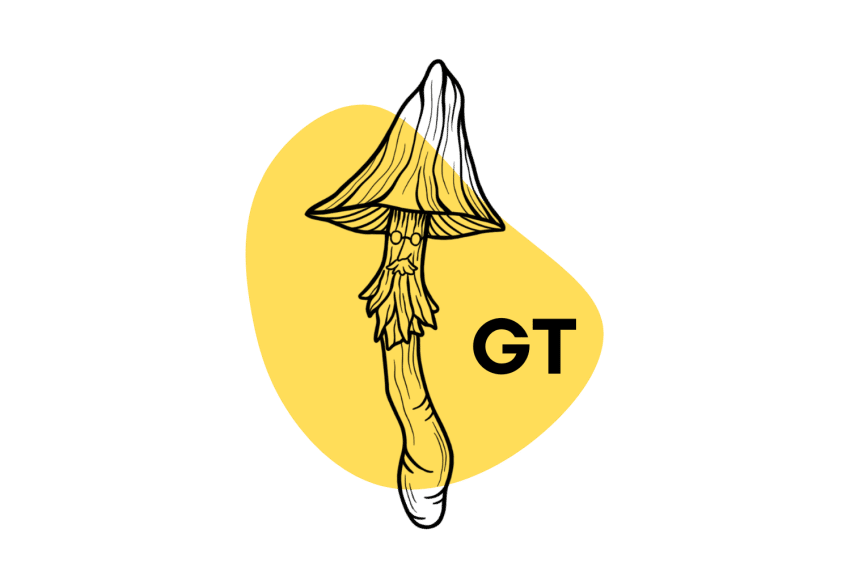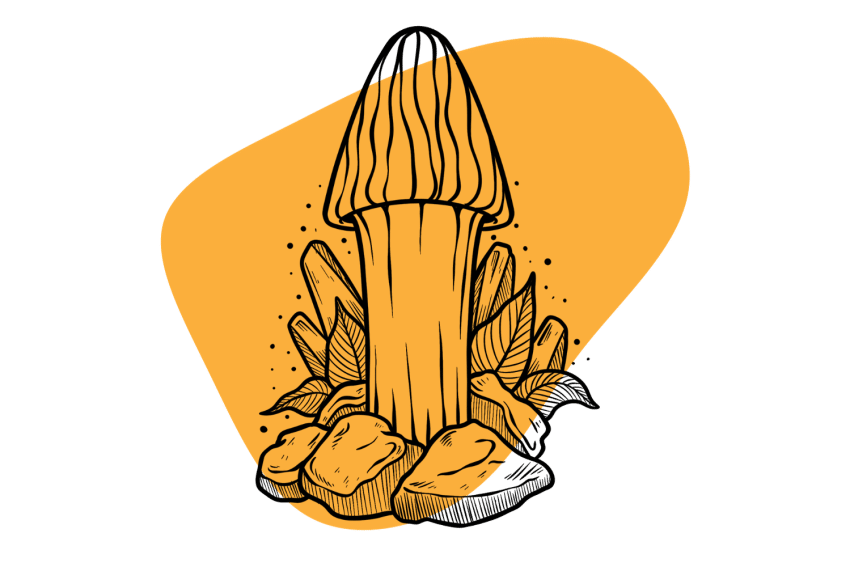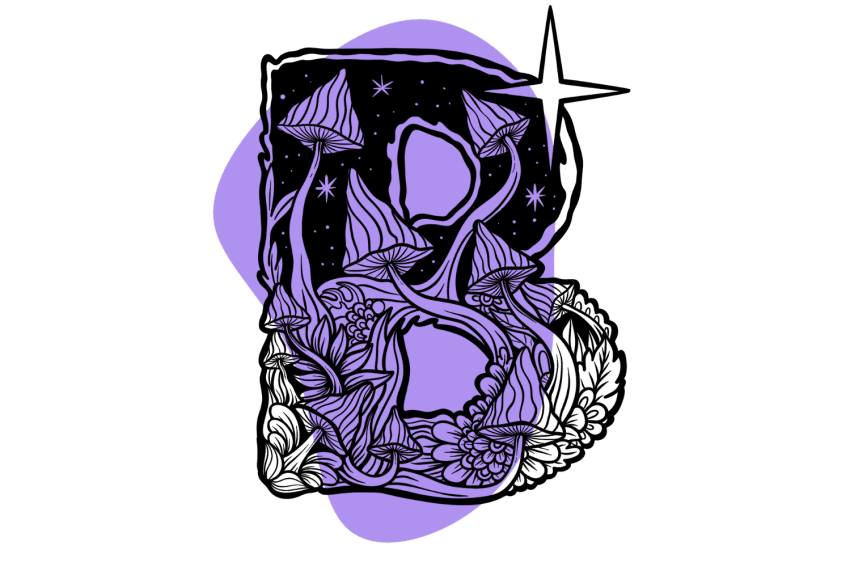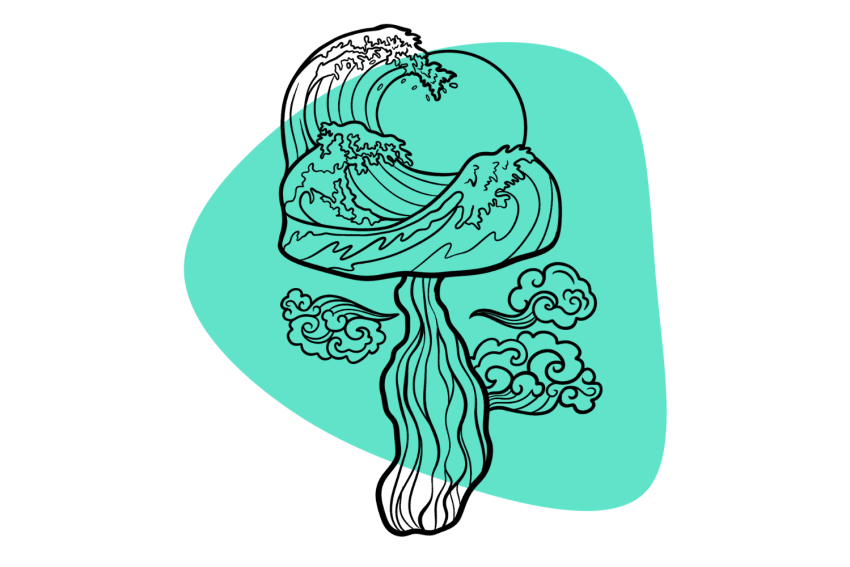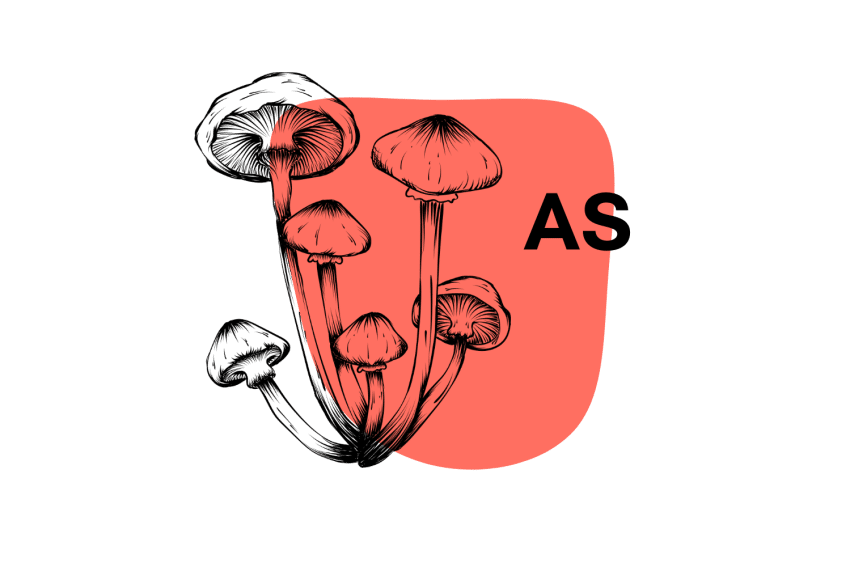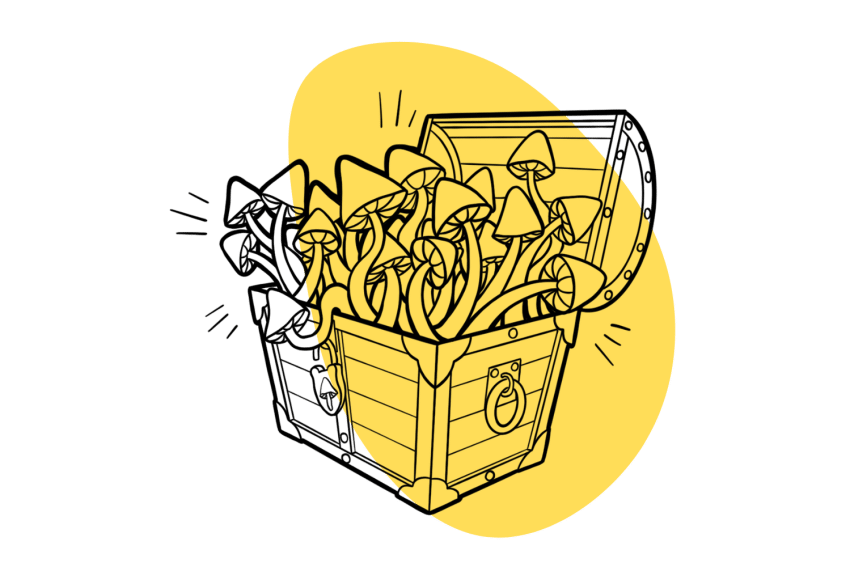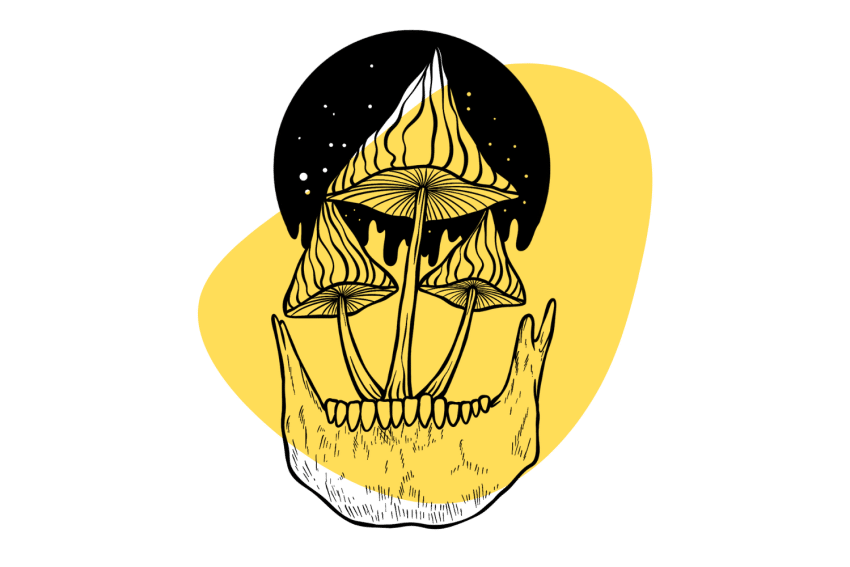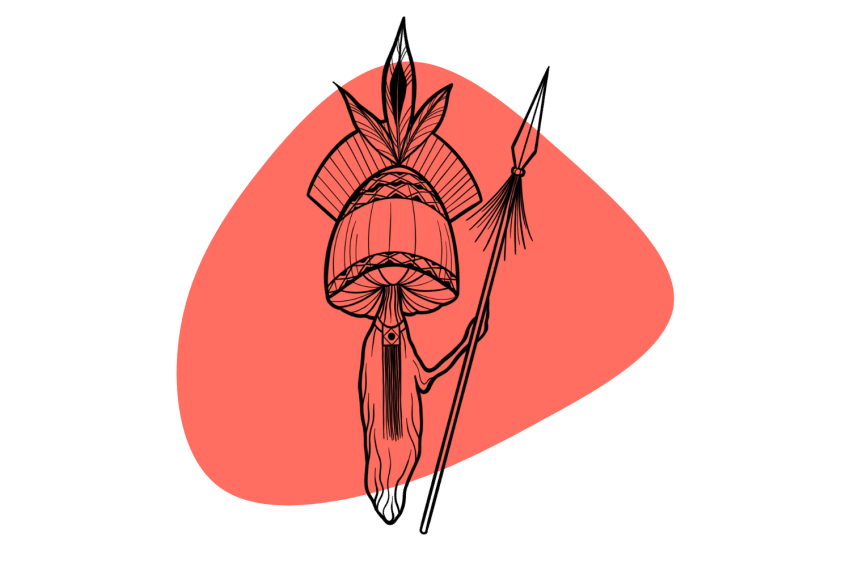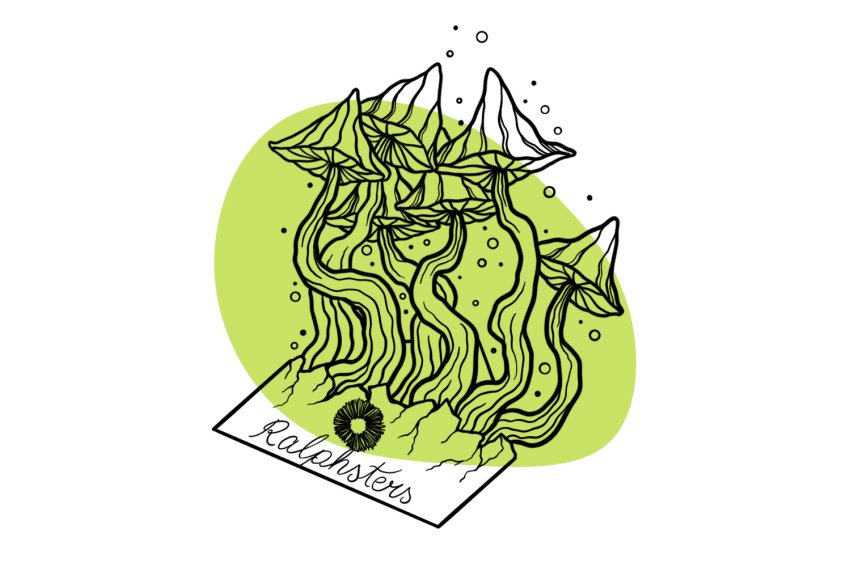Alacabenzi Magic Mushroom Strain: Mild, Euphoric & Insightful
This strain is allegedly a combination of Psilocybe cubensis and Psilocybe semilanceata — but mycologists are skeptical.
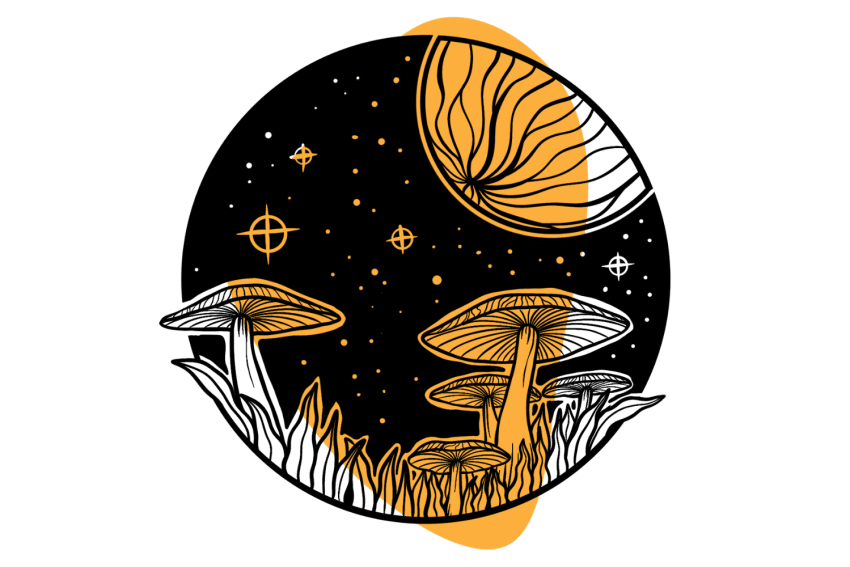
Some psychonauts suspect that the Alacabenzi mushroom strain crosses Psilocybe cubensis and Psilocybe semilanceata (Liberty Caps). Meanwhile, most mycologists claim this combination isn’t possible.
Either way, Alacabenzi is an excellent mushroom for beginners thanks to its meditative-like psychoactivity — not too strong or weak.
Users often compare the experience of tripping on Alacabenzi mushrooms to the sensation of being (very) stoned on strong cannabis edibles.
The high has been likened (lichened?!) to a strong dose of cannabis with mild to moderate euphoria and a body high. No intense visual hallucinations, though, which is good news for newbs.
The trip creates an energizing sensation rather than a sleepy one. So, sticking with the cannabis comparison, Alacabenzi mushrooms produce feelings more like a sativa than an indica.
The Alacabenzi mushrooms alter spatial awareness and physical sensations:
- In small doses, these mushrooms help users feel relaxed.
- They can throw off balance and equilibrium in large doses, making users feel ‘twisty-turny.’
The strain produces fruiting bodies fairly standard in size as far as psilocybe mushrooms go.
Compared with its supposed parent mushroom strains, Alacabenzi shrooms fall right in the middle, ranging in size with caps between 1-4 cm and stems between 1-6 inches long by 1-7 mm thick.
Some growers, even novice ones, report producing Alacabenzi mushrooms with stems over 12 inches long. That makes this strain a great choice for new mycelium growers; it’s easy to grow and not susceptible to bacteria.
Alacabenzi Specs
| Potency | Average 🍄 |
| Cultivation | Easy |
| Species | Psilocybe cubensis |
| Substrate Recommendation | Rye grain or CVG |
| Cost | $ |
| Sold By | Sporeslab, Spores 101, High Desert Spores, Mushroom Prints |
History of Alacabenzi
The Alacabenzi strain is said to be the offspring of Golden Teachers and Liberty Caps, more formally called Psilocybe cubensis and Psilocybe semilanceata.
Alacabenzi first appeared in the late 90s and held popularity during the early 2000s as one of the most commonly used psychedelic mushrooms. This makes sense, given the popularity of both of its parent strains.
Psilocybe cubensis mushrooms are moderately potent in the wild, with the usually reported sample containing 0.25% psilocin [2]. Some samples from the Amazon were reported to contain around 0.33% psilocin [3]. Specially cultivated specimens have been found to contain even more psilocin, which could be due to various factors, including the substrate.
This strain tends to be fairly easy to recognize in wild-mushroom foraging expeditions, especially because it is most often found growing out of dung in subtropical environments.
Golden Teachers have a lot to offer in terms of the trip. That may be due to their unique traveling history from the strain’s supposed starting point: Europe. It’s said that Golden Teachers first came traveling from Spain to West Africa, then from West Africa to the US during the slave trade.
Psilocybe semilanceata, the Liberty Cap, is typically found in manured grasslands and has a tall and thin shape.
Both strains have shown similar substrate growth preferences, opting for hot, humid climates and thriving on dung as a substrate. This is a unique combination because shrooms grow in different climates in the wild.
Despite these similarities, there is some disagreement between mycologists about whether this hybrid strain is plausible. For now, the jury is still out.
Alacabenzi Potency & Psilocybin Content
Alacabenzi mushrooms are roughly average in terms of potency. This makes sense, considering that both parent strains, Psilocybe cubensis, and Psilocybe semilanceata, are considered to be moderately potent magic mushrooms.
The potency of these mushrooms is highly dependent on substrate materials and nutrient content. Since their preferred host materials are manure and cow piles, the psilocybin content and, subsequently, the strength of the mushrooms depend on how nutrient-rich the cow’s diets are.
In settings where cows graze on natural pastures, psilocin content tends to be lower than when cows are supplemented with nutrient-enriched feed [4].
Since neither the parent strains nor the Alacabenzi is typically known for visual hallucinations, it’s a good choice for new psychonauts who are ready to test out psychedelics but don’t want to travel too far.
Just one sample of the Alcabenzi shroom has been submitted to Psilocybin Cup for testing so far. This sample showed 0.67% psilocybin and 0.02% psilocin for a total of 0.68% total tryptamines.
We consider the average magic mushroom strain to fall somewhere between 0.5% and 0.90% total tryptamine levels.
Alacabenzi Variations & Genetic Relatives
The Alacabenzi strain is a cross-breed between Golden Teachers and Liberty Caps, two fairly common and well-known strains of magic mushrooms. There are over 180 identified strains of psychedelic mushrooms, though.
Where to Buy Alacabenzi Spores
Alacabenzi magic mushrooms are a reliable choice for both newbie psychonauts and experienced trippy travelers because they offer deep, insightful experiences yet are fairly mild regarding visual hallucinations.
If you’re interested in the self-inquiry aspects of mushroom tripping, the Alacabenzi strain is a wise choice.
If you’re unsure where to buy magic mushroom spores in Canada, the USA, and Europe, you can get ahold of the Alacabenzi genetics (and sometimes dried mushrooms) from the following dependable resources:
- If you live in the United States — Spores 101, Miracle Farms, or High Desert Spores
- If you live in Canada — Sporeslab, Spores 101, and Mushroom Prints
- If you live in Europe — The Magic Mushroom Shop
How to Grow Alacabenzi Mushrooms
As with all Psilocybe mushrooms, the Alacabenzi strain is a saprophyte and can grow in many environments and habitats. Alacabenzi mushrooms tend to thrive on dung and manure as substrate, but if you’re growing at home, you may want to avoid these.
These mushrooms are aggressive colonizers, which makes them highly resistant to infection and mold. Their resilience makes them a good option for new growers to experiment with. Mushroom grow kits are helpful for first-timers — and even seasoned psychedelic mushroom cultivators — because they do most of the work for you.
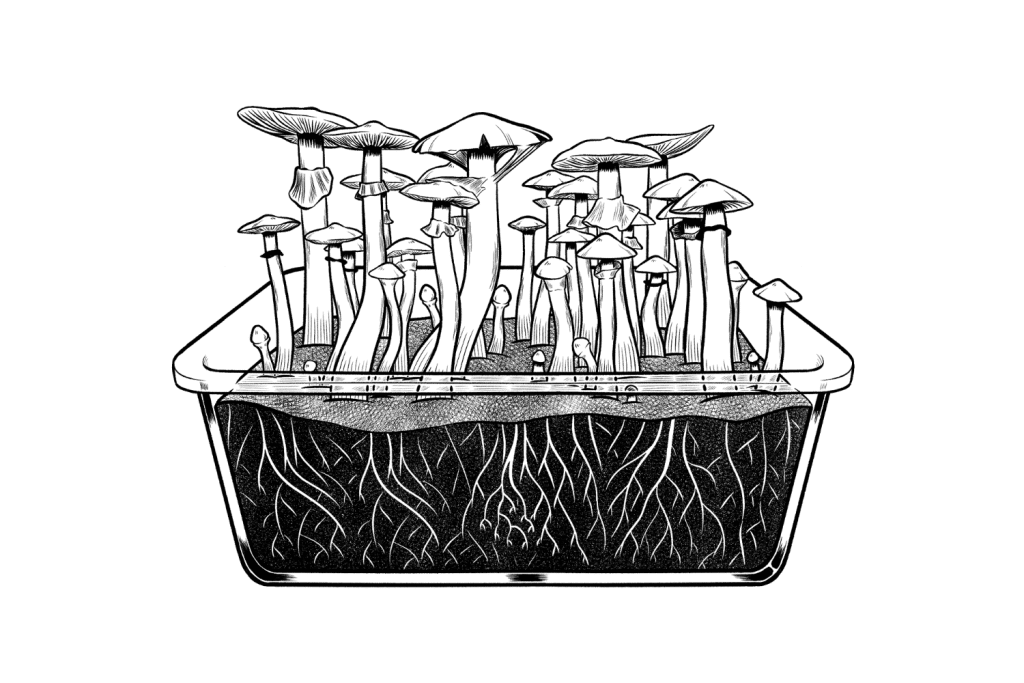
Alacabenzi magic mushrooms follow the same growth pattern as pretty much all mushrooms, which happens in five steps:
1. Prepare the Substrate
Since mushrooms live in their food, the substrate should be nourishing and provide structure for the mycelium. Grains, rice, and seeds are common options (and better than bringing manure into your house). Add water to the container and sterilize. Then, cook the substrate, and let it cool.
2. Inoculate
Following a sterile protocol, transfer a specimen (spores) of the Alacabenzi genetics into the substrate container. Any contaminant could disrupt the mushroom growth, so be quick and careful.
3. Incubate
Place your now inoculated containers in a dark, warm place and wait. Depending on the strain, this step can take anywhere from 7 to 14 days. When you see mycelium colonize (takeover) the substrate, it’s ready.
4. Fruit
Now that the mycelium is strong and resistant to fungus or bacteria, it’s time to grow the mushrooms. Now is the time to open the lids or cut a slit in your mushroom grow bags and place them in a protected space where they can grow.
Related: How to Transport Growing Magic Mushrooms.
5. Harvest & Dry
When the mushrooms are ready, pick them off from the base. Let them dry on a towel or in a dehydrator. Once dry, they’re ready to send you on intergalactic travel.
If you’re interested in cultivating mushrooms, look at this in-depth guide on How To Grow Magic Mushrooms.
Similar Strains to Alacabenzi
Alacabenzi is a great mushroom for new trippers since they’re easy to grow and only create mild visual hallucinations, a good head high, and are not overly intense.
Here’s a list of similar mushroom strains that are either easy to grow or good for new psychonauts:
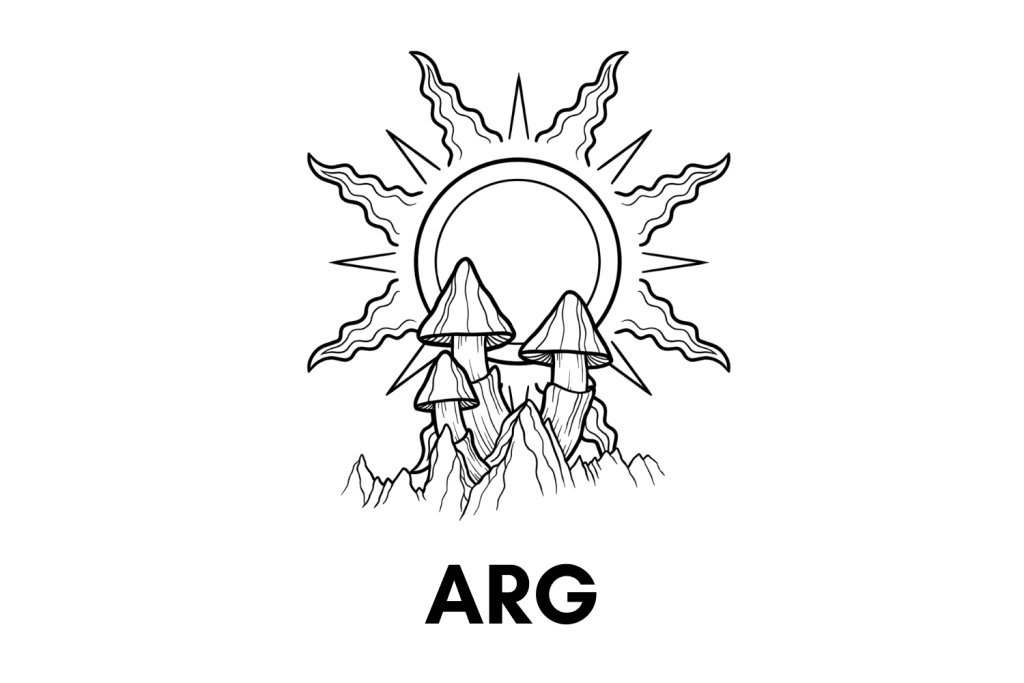
Argentina
Like Alacabenzi magic mushrooms, Argentina shrooms are mold and bacteria-resistant, which makes them easy to grow, even in cool, humid climates. They’re also good for new growers because one batch can produce as many as ten flushes before losing vitality.

Golden Emperor
These mushrooms come from the same family of Golden Teachers but are a little larger. Golden Emperor shrooms offer mild psychedelic adventures with euphoric, insightful experiences and minimal visual hallucinations, much like the Alacabenzi strain.

Australian
The Australian strain is another strain with notoriously large mushroom sizes and light brownish color.
It’s often confused with the Blue Meanies mushroom strain. This strain is resistant to bacteria and mold during the growing process, which makes it an easy option for beginner mushroom cultivators.
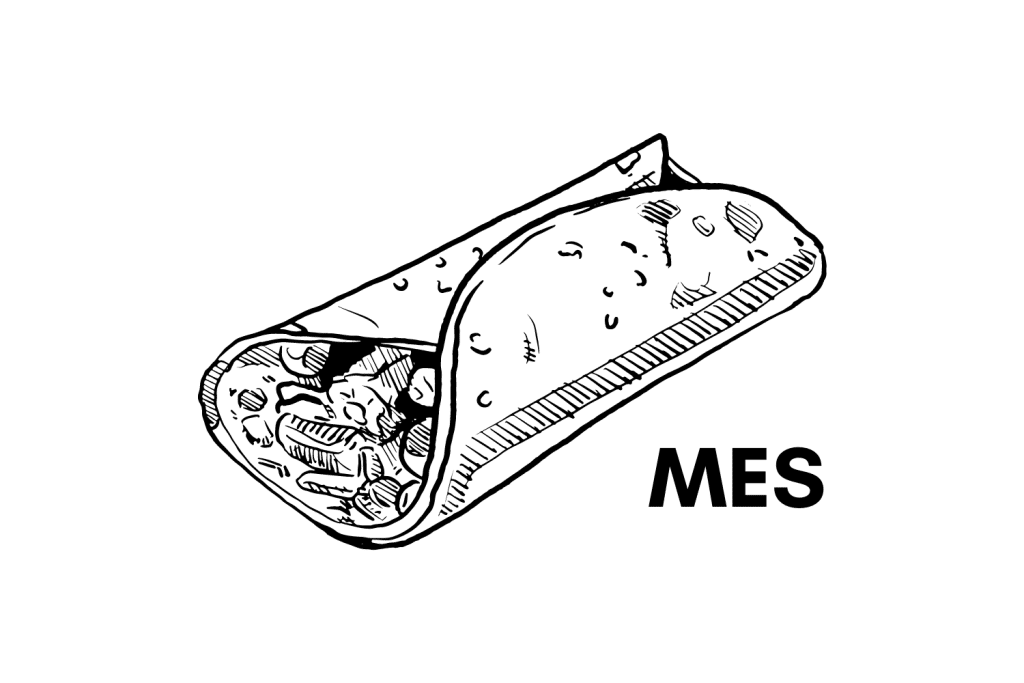
Mestizo
Mestizo mushrooms produce high yields in a batch’s first and second flushes, making it easy for beginners to cultivate them quickly and reliably. They are above average in potency but are a solid step up from the Alacabenzi strain, being only a little stronger and slightly more challenging to grow.
Look for other strains, or find strains that match specific criteria on the Magic Mushroom Strain Guide.
Other Species of Psilocybin-Containing Mushrooms
The vast majority of magic mushroom strains are Psilocybe cubensis mushrooms — but many other species of magic mushrooms produce the active ingredients — psilocin and psilocybin. Depending on where you live, you may be able to find some of these growing in local parks or forests.
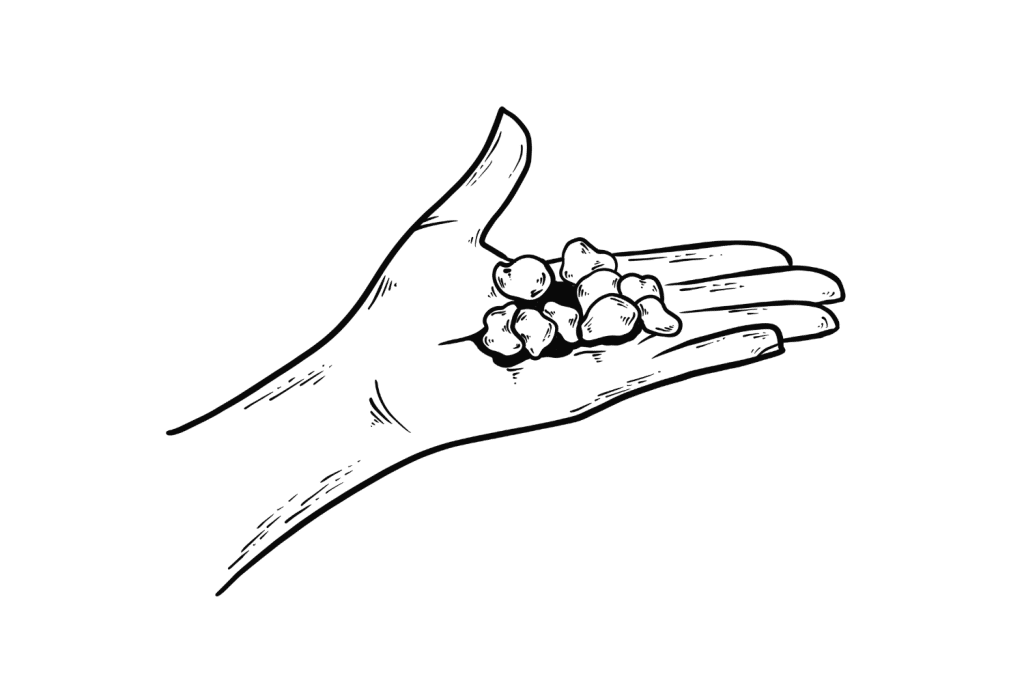
Psilocybe tampanensis
Psilocybe tampanensis is highly active and moderately potent, thanks to high psilocybin and psilocin content. The caps are blueish yellow, and the stem has a bluish tone. The first and only time it was found in the wild was in South Florida, another subtropical, hot and humid climate. Cultures from the initial find were well preserved, so the spores are still in circulation today and widely cultivated.
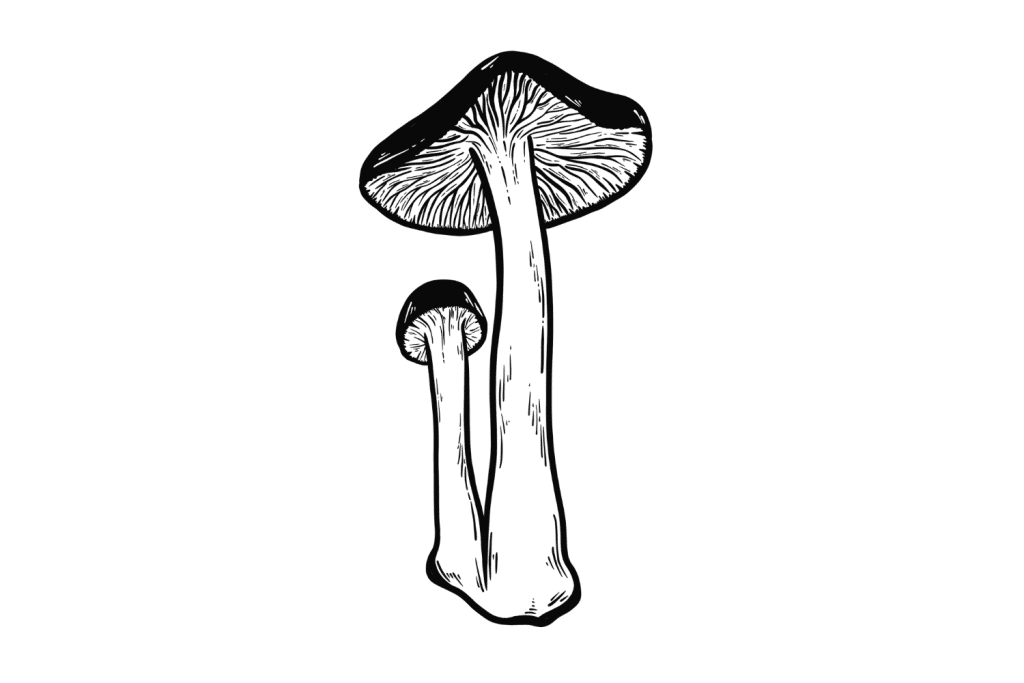
Psilocybe cyanescens
Psilocybe cyanescens are usually called blue halos and have iconic wavy caps that are often ascribed to trippy mushrooms in magic mushroom art by hallucinogenic artists. The caps are brown, and the stems are white but have blue tones when bruised. Like their traveling counterparts, Psilocybe cubensis, they are widespread throughout Europe, including the coastal regions of Spain. P. cyanescens is quite potent, with a maximum of 0.85% psilocybin [5].
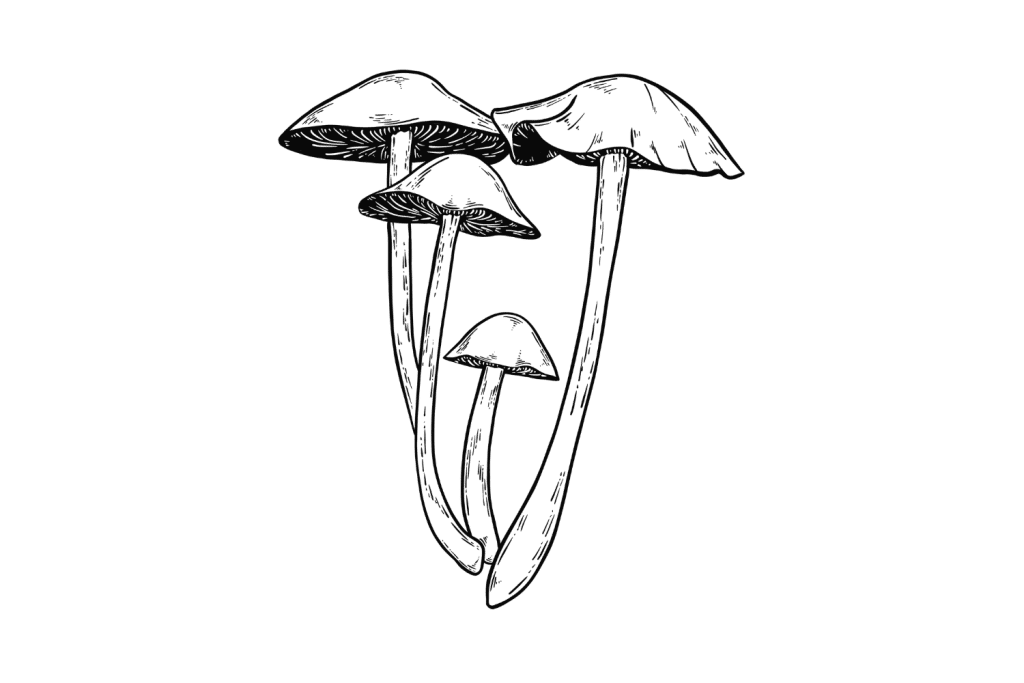
Psilocybe caerulescens
Psilocybe caerulescens are considered to be a landslide mushroom called derrumbes. The caps are slightly blue, especially when bruised, as are the stems. They are commonly found in Mexico, which makes sense given their relative, the Psilocybe mexicana.
It’s considered to be a moderately potent strain and is used by Mazatec healers. This also makes it a common contender in psychedelic art, with appearances in various Aztec art pieces alongside the ‘plants of the mind and spirit — teonanacatl.’
Psilocybe subcubensis
This species can be considered the sibling of the Psilocybe cubensis strain. It’s almost the same as the cubensis, but the spores are much smaller, as are the macroscopic features of the gills, the pleurocystidia. This magic mushroom strain also prefers subtropical climates and can be found in Mexico.
Strains vs. Species: What’s the Difference?
Like bacteria, mushrooms are classified into two taxonomic classes or grouping categories: strains and species.
Species are genetically similar. Strains are genetically identical.
Species are a group of organisms that share the same genetic makeup, while strains are even more specified and exhibit similar growth patterns and chemical characteristics.
Strains refer to an entire group of organisms (of the same species) that produce an observable and repeatable set of traits or characteristics. Two strains of the same species have clear differences in growth habits or chemical makeup [1].
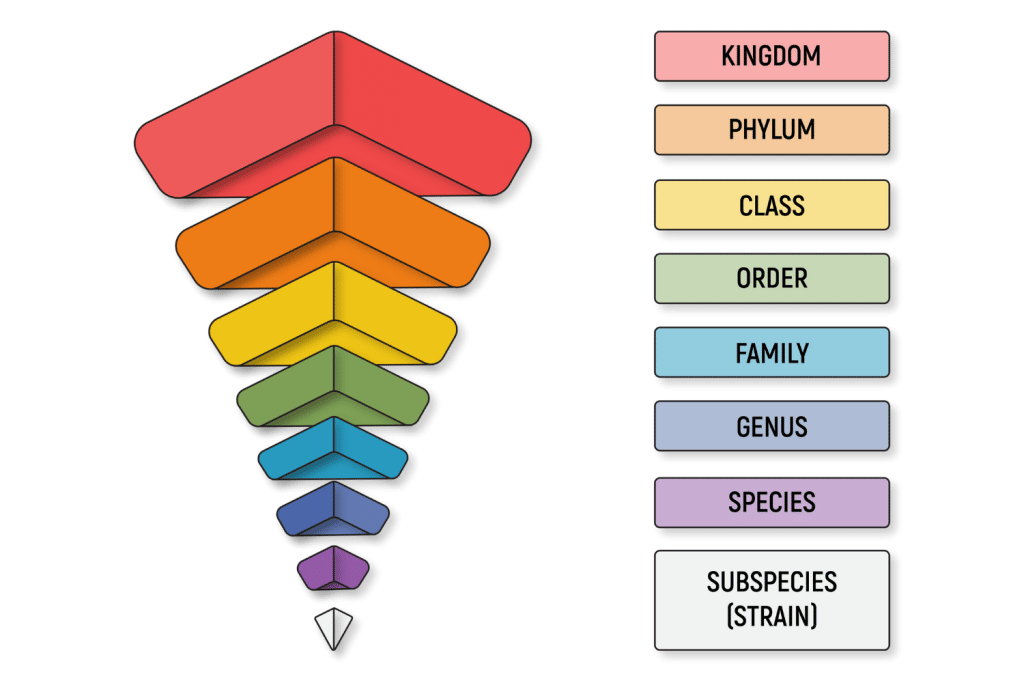
Strains indicate the genetic isolation of DNA sequences. Thanks to scientific study and experimental control, humans can reproduce strains for favorable characteristics, much like strains of marijuana.
Thus far, scientists, mycologists, and mushroom fans have identified over 180 different species of mushrooms containing psilocybin. Psilocybin is the active psychedelic ingredient that converts into psilocin in the body. Surprisingly, psilocin is responsible for the trippy travels that users experience, not the psilocybin.
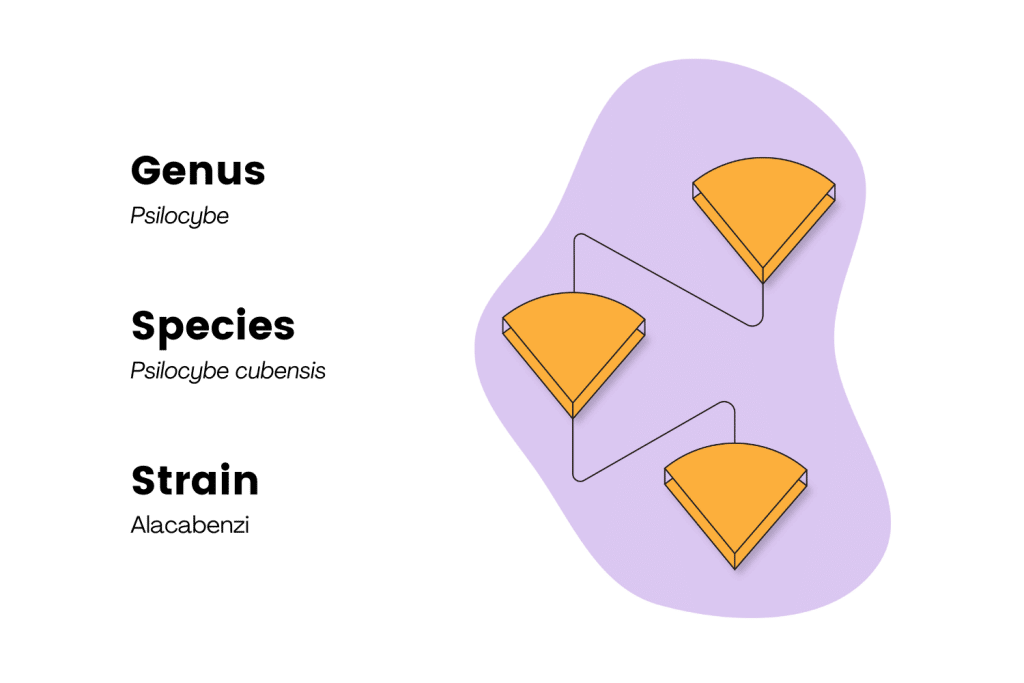
Humans cultivate specific strains of mushrooms to achieve specific desirable outcomes, such as deep thinking, powerful hallucinations, or increased creativity. Each one has distinct physical characteristics in addition to the psychedelic experiences they impart. Different mushrooms vary in cap shape and size, gill attachment and spacing, stem shape and size, and general morphology.
References
- Baron EJ. Classification. In: Baron S, editor. Medical Microbiology. 4th edition. Galveston (TX): University of Texas Medical Branch at Galveston; 1996. Chapter 3.
- Gartz, J., W. Allen, and M.D. Merlin. 1994. Ethnomycology, biochemistry, and cultivation of Psilocybe samuiensis Guzman, Bandala, and Allen, a new psychoactive fungus from Koh Samui, Thailand. Journal of Ethnopharmacology 43: 73-80.
- Stijve, T.C. and A.A.R. de Meijer. 1993. Macromycetes from the state of Parana, Brazil. 4. The psychoactive species. Arq. Biol. Technol. 36 (2): 313-329.
- Gartz, J.1993. Psychotrope Pilze in Europa. Editions Heuwinkel, NeuAllschwil/Basl.
- Stijve, T.C., and T.W. Kuyper. 1985. Occurrence of psilocybin in various higher fungi from several European countries. Planta Medica 51 (5): 385-387.

